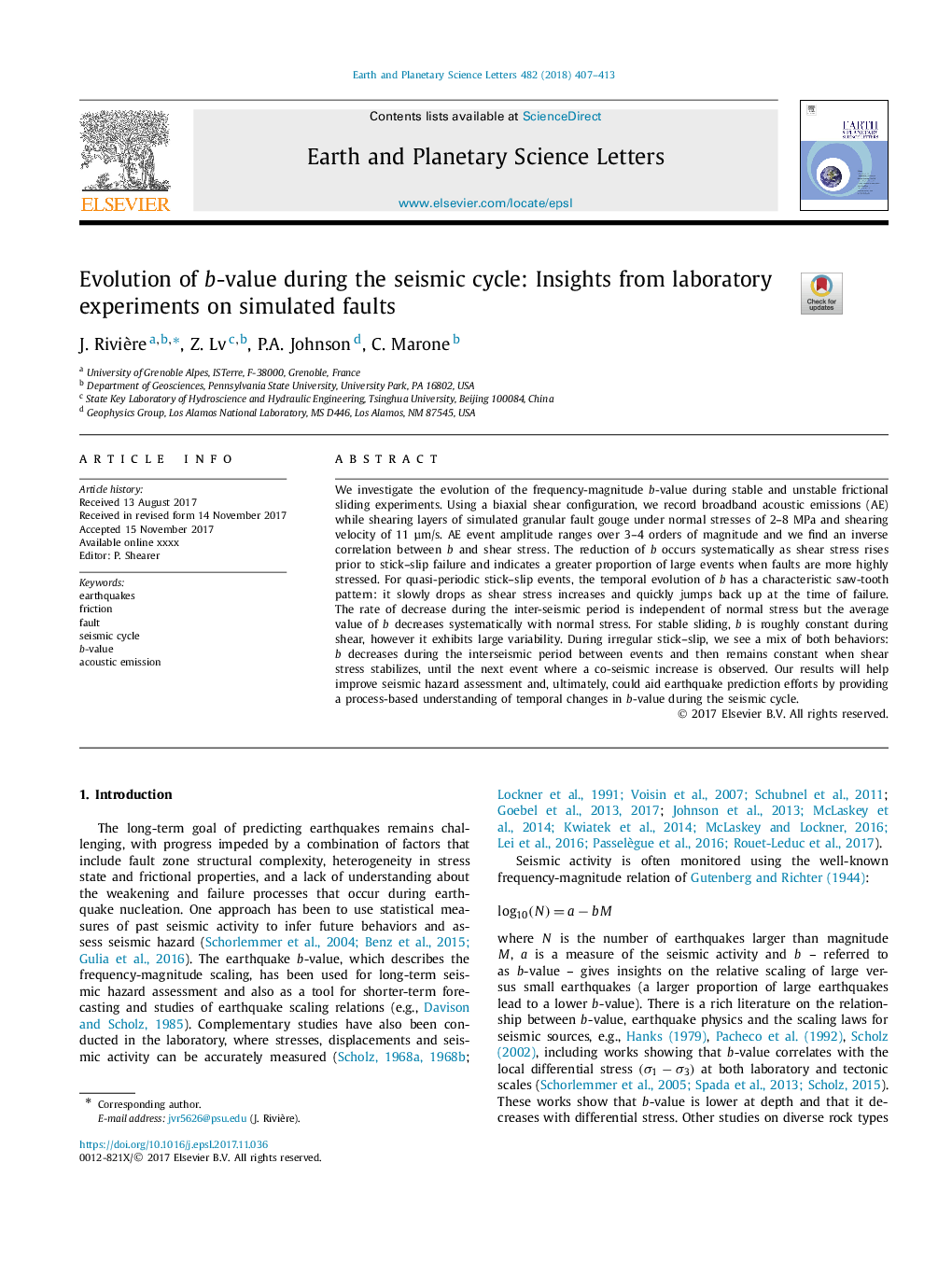| Article ID | Journal | Published Year | Pages | File Type |
|---|---|---|---|---|
| 8907276 | Earth and Planetary Science Letters | 2018 | 7 Pages |
Abstract
We investigate the evolution of the frequency-magnitude b-value during stable and unstable frictional sliding experiments. Using a biaxial shear configuration, we record broadband acoustic emissions (AE) while shearing layers of simulated granular fault gouge under normal stresses of 2-8 MPa and shearing velocity of 11 μm/s. AE event amplitude ranges over 3-4 orders of magnitude and we find an inverse correlation between b and shear stress. The reduction of b occurs systematically as shear stress rises prior to stick-slip failure and indicates a greater proportion of large events when faults are more highly stressed. For quasi-periodic stick-slip events, the temporal evolution of b has a characteristic saw-tooth pattern: it slowly drops as shear stress increases and quickly jumps back up at the time of failure. The rate of decrease during the inter-seismic period is independent of normal stress but the average value of b decreases systematically with normal stress. For stable sliding, b is roughly constant during shear, however it exhibits large variability. During irregular stick-slip, we see a mix of both behaviors: b decreases during the interseismic period between events and then remains constant when shear stress stabilizes, until the next event where a co-seismic increase is observed. Our results will help improve seismic hazard assessment and, ultimately, could aid earthquake prediction efforts by providing a process-based understanding of temporal changes in b-value during the seismic cycle.
Related Topics
Physical Sciences and Engineering
Earth and Planetary Sciences
Earth and Planetary Sciences (General)
Authors
J. Rivière, Z. Lv, P.A. Johnson, C. Marone,
